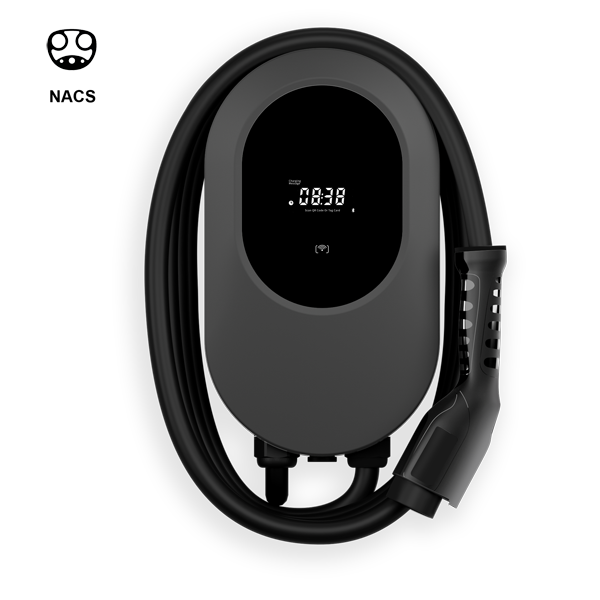As electric vehicles (EVs) continue to grow in popularity, the need for efficient charging solutions is becoming increasingly important. Among the various charging solutions available, Level 2 EV chargers are a smart choice for home charging stations. In this article, we will look at what a Level 2 charger is, compare it to other levels of chargers, analyze its advantages and disadvantages, and discuss whether it is worthwhile to install a Level 2 charger at home
1. What is Level 2 EV charger?
A Level 2 EV charger operates at 240 volts and can significantly reduce the charging time of an electric vehicle compared to lower level chargers. 2 level chargers are typically used in both residential and commercial environments and can meet the high power demands of most modern electric vehicles, delivering between 3.3kW and 19.2kW of power, and charging at speeds of between 10 and 60 miles per hour, depending on the vehicle and the specification of the charger. 60 miles per hour, depending on vehicle and charger specifications. This makes them ideal for everyday use, allowing EV owners to fully charge their vehicles at night or during the day.
2. What are Level 1, Level 2 and Level 3 EV chargers?
EV chargers are categorized into three levels based on their charging speed and power output:
Level 1 Charger
Voltage: 120 volts
Power output: Up to 1.9 kW
Charge Time: 4 to 8 miles per hour
Use Case: Primarily used for home charging, longer charging times, vehicles can be plugged in overnight.
Level 2 Charger
Voltage: 240 volts
Output power 3.3 kW to 19.2 kW
Charge Time: 10 to 60 miles per hour
Use Case: Ideal for residential and commercial use, faster charging time, ideal for everyday use.
Level 3 Charger (DC Fast Charger)
Voltage: 400 volts or higher
Output power 50 kW to 350 kW
Charging time: 80% charge in 30 minutes or less
Use cases: Mainly found at public charging stations for fast charging on long trips. 3.
3. Advantages and disadvantages of different levels of EV chargers
Advantages of Level 2 chargers
Faster charging: Level 2 chargers greatly reduce charging time, making them ideal for everyday use.
Convenient: They allow users to charge their vehicles overnight and have a full charge by morning.
Cost-effective: Although they require an upfront investment, they save money in the long run compared to public charging stations.
Disadvantages of Level 2 chargers
Installation Costs: Installing a Level 2 charger may require electrical upgrades, which can add to the initial cost.
Space Requirements: Homeowners need enough space for installation, but not all homes can accommodate them.
Advantages of Level 1 Chargers
Low cost: Level 1 chargers are inexpensive and often require no special installation.
Ease of use: They can be used in standard household outlets, so they are widely available.
Disadvantages of Level 1 chargers
Slow charging: Charging times can be too long for everyday use, especially for larger battery packs.
Advantages of 3-stage chargers
Fast charging: Ideal for long trips, can be charged quickly on the go.
Availability: Commonly found at public charging stations, enhancing the charging infrastructure.
Disadvantages of 3-stage chargers
Higher costs: Installation and usage costs can be significantly higher than for Level 2 chargers.
Limited Availability: Not as popular as Level 2 chargers, making long distance travel more challenging in some areas.
4. Is it worth installing a Level 2 charger at home?
For many EV owners, installing a Level 2 charger in their home is a worthwhile investment. Here are some reasons why:
Time Efficiency: With the ability to charge quickly, users can maximize their vehicle’s uptime.
Cost Savings: Having a Level 2 charger allows you to charge at home and avoid paying higher fees at public charging stations.
Increase Property Value: Installing a home charging station can add value to your property, making it more attractive to potential buyers in the growing electric vehicle market.
However, homeowners should weigh these benefits against the cost of installation and assess their charging needs.
5. The future of home chargers
The future of home EV chargers looks promising, with advances in technology expected to improve efficiency and convenience. Key developments include
Smart charging solutions: Integration with smart home systems to optimize charging times based on electricity rates and user preferences.
Wireless charging technology: Future chargers may offer wireless functionality, eliminating the need for a physical connection.
Higher power output: New charging technologies can provide faster charging speeds, further enhancing the user experience.
Advantages of Linkpower Electric Vehicle Charger
Linkpower is at the forefront of EV charging technology, providing advanced solutions to meet the needs of residential and commercial users. Its 2-stage chargers are designed with the latest technology to ensure safety, efficiency, and user-friendliness.The key benefits of Linkpower’s EV chargers include
High Efficiency: Fast charging feature reduces downtime for EV owners.
User-friendly interface: Easy-to-navigate controls make charging easy for everyone.
Strong Support: Linkpower provides excellent customer service and support to ensure users get the help they need.
In short, as electric vehicles continue to reshape transportation, Level 2 EV chargers are a smart and practical choice for home charging stations. With efficient charging capabilities and the advanced features of Linkpower products, homeowners can enjoy the benefits of electric vehicles while protecting the environment, achieving zero carbon emissions, and contributing to a more sustainable future.
Post time: Oct-30-2024



